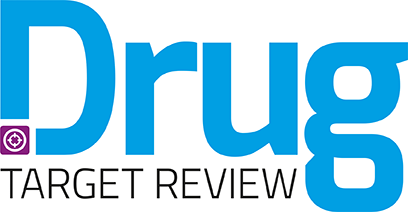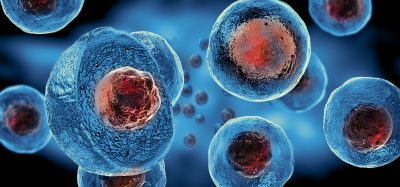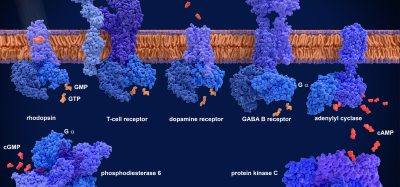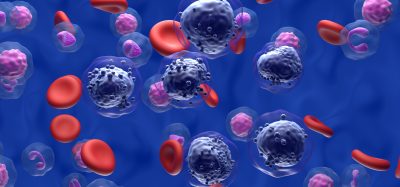Gylden’s gold platform trains T cells to kill viruses
Posted: 9 April 2025 | Drug Target Review | No comments yet
What if vaccines could train your immune system to eliminate infections at the source? Find out how Gylden Pharma’s gold nanoparticle platform delivers targeted T cell immunity – providing a precise and durable defence against complex infectious diseases.


In the fast-moving world of drug discovery and vaccine development, the most transformative breakthroughs often emerge where cutting-edge science meets bold innovation. One such breakthrough comes from Gylden Pharma, a clinical-stage biotech developing T cell-priming vaccines to combat global infectious disease threats. Under the leadership of Professor Thomas Rademacher, Gylden’s gold nanoparticle-based vaccine platform represents a fundamental shift in how we approach immunisation and immune system activation.
Professor Rademacher, a pioneer in molecular medicine and glycobiology, has built a distinguished career at the crossroads of academia and biotech entrepreneurship. He founded Oxford GlycoSciences, the first biotech spin-out from the University of Oxford, and has spearheaded a series of other successful ventures. Now, his focus is on Gylden Pharma’s nanoparticle-based vaccine platform – a cutting-edge solution that bypasses the limitations of traditional RNA and live attenuated virus vaccines.
In a recent interview, Professor Rademacher shared the key scientific breakthroughs and strategic insights behind this platform. His explanations reveal how gold nanoparticles are transforming the vaccine landscape – enhancing cellular immunity and solving critical challenges in peptide delivery.
The shift from RNA to nanoparticles
Most modern vaccines, including mRNA-based vaccines like the Pfizer-BioNTech and Moderna COVID-19 vaccines, rely on lipid nanoparticles or live attenuated viruses to deliver antigenic material to the immune system. However, this approach has limitations – primarily related to stability, delivery efficiency, and the ability to generate robust cellular immunity.
“The fundamental Holy Grail of all immunology and vaccinology is to turn on cellular immunity, which allows you to kill the infected cell.”
Gylden Pharma’s vaccine platform instead harnesses the unique properties of gold nanoparticles, which are small enough to avoid the size-related delivery challenges of lipid nanoparticles but stable enough to protect delicate peptides from degradation. As Rademacher explained:
“The fundamental Holy Grail of all immunology and vaccinology is to turn on cellular immunity, which allows you to kill the infected cell.”
This focus on cellular immunity distinguishes Gylden’s approach from traditional vaccines, which primarily stimulate antibody production to target free viruses. The problem is that free viruses are not always present – many viruses reside within host cells, evading antibody-based immunity. Effective long-term immunity, therefore, requires the activation of cytotoxic T cells (CD8+ T cells) to recognise and destroy infected cells. These specialised immune cells patrol the body, identifying and killing infected or damaged cells by releasing toxic granules that trigger cell death, effectively halting the spread of infection.
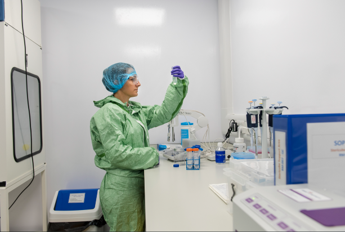

Gylden Pharma is developing a gold nanoparticle-based vaccine platform that trains T cells to recognise and destroy infected cells, offering precise and long-lasting immunity against complex infectious diseases.
The gold nanoparticle breakthrough
The key to Gylden’s success lies in a discovery made years ago in the early days of nanomedicine. Gold nanoparticles were initially explored as drug delivery vehicles – molecules could be attached to the surface of the particle, which could then be directed to specific tissues using a targeting molecule. However, their potential in vaccines was only realised when Gylden researchers discovered that gold nanoparticles could stabilise peptides – the building blocks of protein antigens that stimulate T cell responses.
“The problem with peptide vaccines,” Rademacher explained, “is that peptides are rapidly degraded in the body – they last about seven seconds before they’re chewed up.”
Gold nanoparticles solved this problem by creating a protective environment around the peptides. The crystalline gold structure generates an electrochemical field that disrupts the local water structure, making the peptides resistant to enzymatic degradation. This allows them to survive long enough to reach the draining lymph nodes, where they are processed and presented to T cells.
“Without this particle, you cannot deliver peptides or vaccinate in a given section,” Rademacher stated.
The ability to deliver intact peptides directly to lymph nodes was a crucial breakthrough – it allowed Gylden’s platform to train T cells to recognise viral peptides before the body was exposed to the virus.
Cracking the ‘immune code’
A critical part of Gylden’s approach is understanding the peptide ‘code’ generated by infected cells. Viruses hijack host cells and cause them to produce foreign peptides, which are presented on the cell surface by class I major histocompatibility complex (MHC) molecules. The immune system’s cytotoxic T cells can recognise these foreign peptides and destroy the infected cells.
We define the peptide signatures, which will be the targets of the T cells. If you’ve got T cells that recognise the signature, it will kill the infected cells very efficiently.
Gylden’s researchers use a technique called immunoproteomics to map the peptide signatures produced by infected cells. This allows them to identify the specific peptides that will generate the most effective T cell responses. According to Rademacher:
“We define the peptide signatures, which will be the targets of the T cells. If you’ve got T cells that recognise the signature, it will kill the infected cells very efficiently.”
Once the peptide code is identified, Gylden attaches these peptides to the gold nanoparticles and delivers them to the immune system, training it to recognise and respond to the specific threat.
Preclinical and early clinical data
A key question in vaccine development is how well a vaccine performs in preclinical and early-stage human trials. Gylden’s vaccine platform has shown remarkable success in both.
Rademacher explained that their approach bypasses the need for traditional animal testing:
“Everybody asks us why we don’t test our vaccines in monkeys and rabbits. Our vaccines are designed for the human immune system – they wouldn’t work in monkeys because the immune systems are fundamentally different.”
We achieved 100 percent protection – the first time that had ever been done.
However, Gylden’s researchers tested the platform in a specialised HLA transgenic mouse model – a mouse genetically engineered to carry human immune system genes. In a high-risk challenge study, they vaccinated the transgenic mice against SARS-CoV-1 – the virus behind the 2003 outbreak with a 50 percent mortality rate. After vaccination, the mice were exposed to a lethal dose of SARS-CoV-1.
“We achieved 100 percent protection – the first time that had ever been done.”
Perhaps even more remarkable is how the vaccine was delivered: via skin immunisation. The vaccine was administered using micro-needle technology into the epidermal layer of the skin. This approach generated tissue-resident T cells – T cells that patrol the body’s tissues, including the lungs – creating a first line of defence against infection.
“T cells in the bloodstream are of no use – you need them in the tissues, waiting for the virus to arrive. That’s what tissue residency gives you.”
Human trials and real-world efficacy
Gylden’s platform has also shown promising results in early-stage human trials. The company conducted Phase I clinical trials in Switzerland for both a COVID-19 vaccine and a dengue vaccine.
“Our data showed results comparable to yellow fever vaccine – one of the most effective vaccines ever developed.”
The strength of the data convinced the Brazilian government to license Gylden’s dengue vaccine for all of Brazil and Latin America. Large-scale trials are now underway.
“We also saw a strong efficacy signal in our COVID-19 trial during the Omicron wave – none of the vaccinated participants caught COVID.”
Pandemic preparedness and future applications
One of the most exciting aspects of Gylden’s platform is its adaptability. Most vaccines struggle to keep up with rapidly mutating RNA viruses like flu, dengue, and coronaviruses. But because Gylden’s platform targets the stable peptide signatures of viruses rather than surface proteins, it’s unaffected by mutation.
“Our vaccines are resistant to genetic drift. A flu vaccine based on our platform would work against H1N1, H5N1, and other strains because the T cell targets are conserved.”
This adaptability positions Gylden’s platform as a powerful tool for pandemic preparedness. Gylden is currently developing a library of vaccines against the ‘top 10’ most dangerous viruses, including:
- Ebola
- Zika
- Dengue
- SARS and MERS
- Influenza A
“We can store these vaccines and deploy them rapidly when an outbreak occurs -providing an immediate response while traditional vaccine development catches up.
A new era for vaccine development
Gylden Pharma’s gold nanoparticle platform represents a transformative step in vaccine technology. By targeting cellular immunity, stabilising peptides with gold nanoparticles, and mimicking natural infection with contextual signals, Gylden has created a platform that could revolutionise how we protect against both infectious diseases and cancer.
With this technology, the future of vaccine development looks brighter – and more golden – than ever.
Meet Professor Thomas Rademacher


In 2000, he entered into a collaboration with the Spanish Research Council and co-founded the first nanomedicine company, Midatech Ltd. Midatech floated on the AIM and NASDAQ stock exchanges in December 2015.
Professor Rademacher has authored over 200 publications and 50 patents – 19 of which are in the nanomedicine field. In addition to being a world leader in nanomedicine, he is also an expert in foetal-maternal medicine, having produced 25 publications and filed 5 patents related to preeclampsia.
Related topics
Drug Discovery, Drug Discovery Processes, Immunology, Nanomedicine, Nanoparticles, Peptide Therapeutics, T cells, Vaccine, Vaccine development
Related conditions
Covid-19, Dengue, Ebola, Influenza A, SARS-CoV-1, Zika
Related organisations
Gylden Pharma
Related people
Professor Thomas Rademacher
